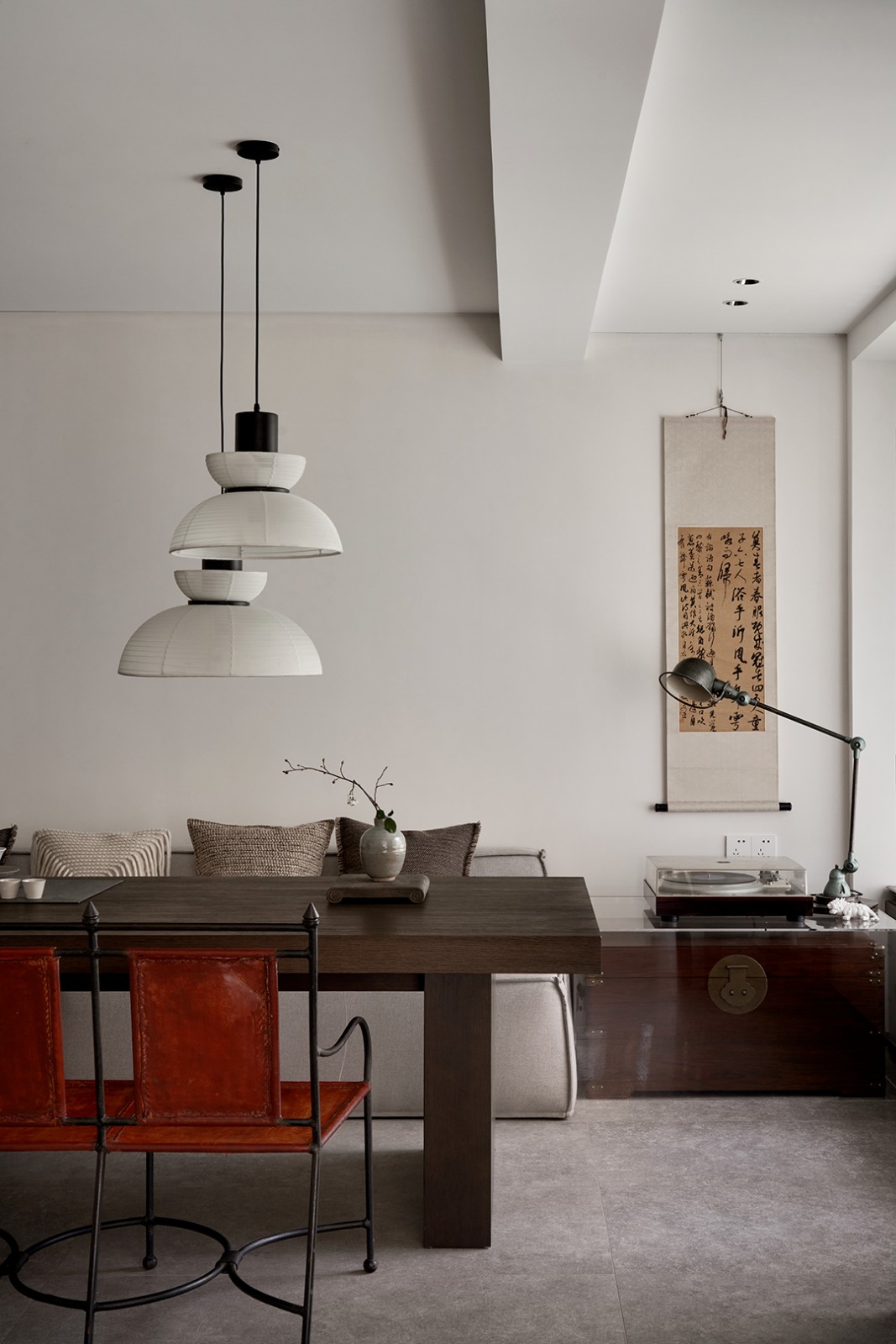Single House Re
2016-09-14 02:00
© David Frutos
(C)戴维·弗鲁托斯


架构师提供的文本描述。这个项目的出发点是在以前的蓄水池上建造一个单人住宅。该遗址后来随着时间的推移而改变,在1955年左右达到了最后的配置。它有两个层次,朝南,从那时起一直保持不变。这是一个低密度郊区环境的一部分,属于一个独特的周边地区的发展模式,特点是20世纪前三分之一的夏季留在马德里山脉的住宅区。该遗址有典型的灌木丛植被,增加了非本地但适合的物种,受该地区干燥的大陆气候(非常温暖的夏季和非常寒冷的冬天)的制约。(鼓掌)
Text description provided by the architects. Building a single-occupancy home over a former water cistern was the starting point of the project. The site, subsequently altered over time, reached its final configuration circa 1955. It has two levels, facing south, and has remained unaltered since then. The site is part of a low-density suburban environment, which belongs to a development model distinctive of peripheral areas, characteristic of the first third of the 20th century as the summer stays residential areas in the mountain range of Madrid. The site contains typical scrubland vegetation, increased with non-native but suitable species, conditioned by the region´s dry continental climate (very warm summers and very cold winters).
© David Frutos
(C)戴维·弗鲁托斯


© David Frutos
(C)戴维·弗鲁托斯


最初是一个地下蓄水池,连接到一个井,提供了国家的主要和原始建筑物。它呈现了非正式的平面图几何形状,可能是由于适应了落基的地面。地面的不均匀性使得织物的南侧浮出水面,其采用了坚固的挡墙的图像,该挡墙在该侧被限制在井口处,并且有时用作庆祝的空间。当水箱不再满足其任务时,它开始用作所有种类的物体和器具的仓库和储藏室,但是没有任何其他的适应性而不是入口孔。然后揭示了内部构造和结构构造。这是第一次重新拨款,但这个地方继续保持其最初的精神作为一个可进入的外部空间,即隐藏、地下、仓库。
It was initially an underground cistern connected to a well that supplied the main and original building of the state. It presented informal floor plan geometry, probably due to the adaptation to a rocky ground. The unevenness of the ground propitiated the surfaced of the southern side of the fabric, which adopted the image of a strong retaining wall that confined, on this side, an upper paved platform where is located the well head, and which was occasionally used as space for celebrations. When the cistern no longer fulfilled its mission, it started to be used as a warehouse and storage room for all sort of objects and utensils, but without any other adaptation than an entrance aperture. The interior constructive and structural configuration was then revealed. This was the first re-appropriation, yet the place continued maintaining its initial ethos as an accessible exterior space, that hides, underground, a warehouse.


最后的重新分配发生在网站的改造过程中,目的是为了解决佣金问题。无论是直接的环境还是地名都没有被修改;完全相反,预先存在的被认为是一种可能的痕迹模式(弯曲的玻璃外墙遵循要维护的前一步的痕迹)。在前铺好的平台上,出现了一个直立的物体,它向前移动,向南突出,俯瞰着由地形不均匀所产生的新颖的空旷空间。较低的地面水平被稍微降低,以创建一个新的包围墙,创造一个阳台,放置在以前的平台气氛,现在吹嘘,同时是内部和外部。(鼓掌)
The final re-appropriation occurred with the transformation of the site in order to address the commission. Neither the immediate environment nor the toponymy is modified; quite the opposite, the pre-existing is accepted as a possible trace pattern (the curved glass façade follows the trace of the former step to be maintained). On the former paved platform emerges a perched object that moves forward and overhangs facing south over the novel empty space produced by the unevenness of the terrain. The inferior ground level is slightly lowered in order to, with the creation of a new enveloping wall, create a veranda that is placed outside the former platform atmosphere, and that now boasts being, at once, interior and exterior.
© David Frutos
(C)戴维·弗鲁托斯


这幢房子的上层占据了新的预制空间,它是由大型、多层云杉(SPF)木材制成的交叉层合木材建造的,它位于一种新的金属结构之上,这种结构在结构上不干扰旧的庞大结构;由天然石头、陶瓷砖和混凝土组成。这一卷形成了一个巨大的开放空间,同时工作的客厅/餐厅和厨房,沟通的房子和共同的花园。较低层,部分掩埋,包括私人和私人空间,零碎的静修室,开放给一个露台和前面提到的私人内外部门廊,面对一个预先设计的人工景观,不像普通花园的自然风景画。
The upper floor of the house occupies the new prefabricated volume built with cross-laminated timber made of large, multi-layered panels of spruce-pinefir (SPF) lumber sitting on top of a new metallic structure that does not interfere structurally with the old massive structure; composed of natural stone, ceramic brick and concrete. This volume shapes a big open space that works simultaneously as living/dining room and kitchen, communicating the house with the common garden. The lower level, partially buried, includes the private and intimate spaces, fragmented rooms of retreat, opened to a patio and to the aforementioned private interior-exterior porch veranda facing a pre-designed artificial landscape unlike the natural picturesque of the common garden.


设计了一个新体积的建筑围护结构,具有很高的隔热性能,涉及到最佳自然照明和交叉通风的盲/开平面分布(响应于现有景观中嵌入的定向几何学和作为夏季/冬季被动空调的新的景观规划策略);除了预先存在的蓄水池体积所特有的其他条件(大容量、自然通风、窗口空间和孔的分布、半埋藏空间和“洞穴或洞穴效应”)之外,强化了房屋的能量概念,从根本上讲是基于被动措施。
A building envelope of the new volume has been designed with a high degree of thermal insulation concerning a distribution of blind/open planes that optimizes natural lighting and cross ventilation (in response to the oriented geometry embedded within the existent landscape and to the a new landscaping strategy as a summer/winter passive conditioner); in addition to those other conditions particular to the pre-existing cistern volume (massiveness, natural ventilation, distribution of window spaces and apertures, spaces semi buried and `cave or grotto effect´; reinforces the energy concept of the house, fundamentally based on passive measures.
© David Frutos
(C)戴维·弗鲁托斯
























































Architects Valdivieso Arquitectos
Location Alpedrete, Spain
Category Sustainability
Architect in Charge Alejandro Valdivieso
Area 198.62 m2
Project Year 2015
Photographs David Frutos
Manufacturers Loading...































